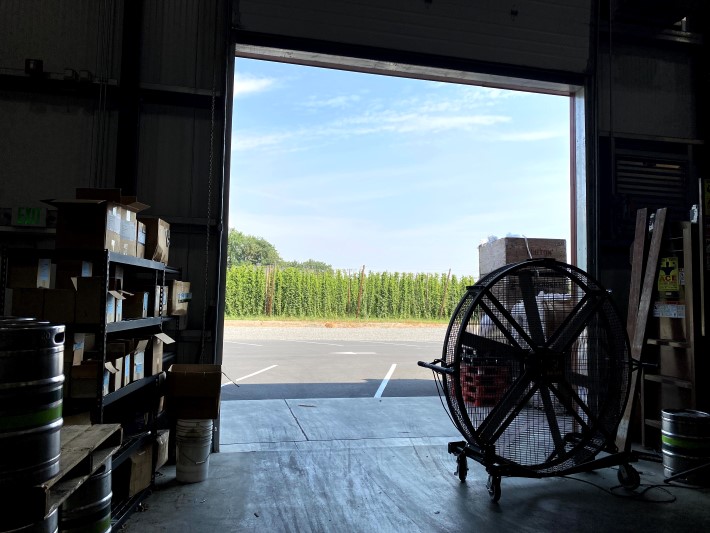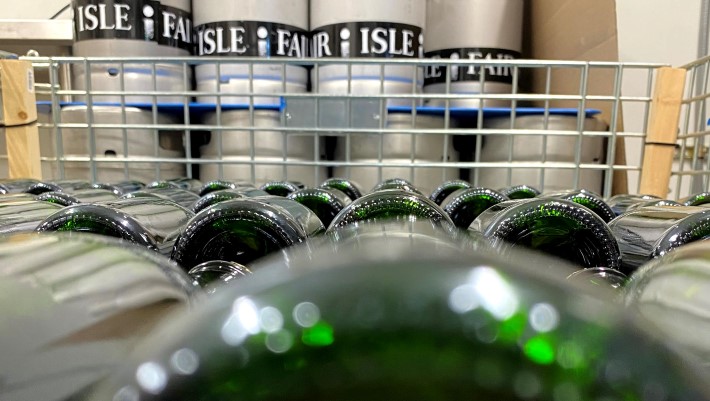
Hops (at Loftus Ranches) viewed from inside a brewery (Bale Breaker). Moxee, Washington.
There is a decent chance I will be in a hop field, or on the way to one, when you read this. I’ve also seen a lot of grapes, fruit trees, corn and cattle since reaching the Northwest a week ago. Also a lot of smoke, from fires in California and Washington, hanging in the air and plants that suffered from the “heat dome” that settled over the region early in summer. So the first link today is to a press release. It reads like a press release, but, dang, pay attention, because climate change is real.
Carbon neutral
“New Belgium Brewing is releasing its Carbon Neutral Toolkit to support fellow beer companies on the journey toward net-zero carbon emissions. The detailed resource, which represents hundreds of hours of work and significant financial investment from New Belgium, is designed to help other small- and medium-sized breweries measure their carbon footprint and take steps to make their businesses carbon neutral by supporting the highest impact greenhouse gas emissions reduction initiatives available.”
Unacceptable
“I know I keep using the word ‘unacceptable’ . . . but how else can you describe the fact that part of going to festivals for womxn just naturally includes being prepared to guard yourself, to be subjected to discrimination and danger, to turn on yourself if something bad does indeed happen because that’s who society has taught you to blame?”
Courtney Iseman, who writes the Hugging the Bar newsletter, and Women of the Bevolution founder Ash Eliot are starting a series discussing the current state of safety and beer festivals . . . or lack thereof. Subscribe to Hugging the Bar to follow.
Texas terroir
You must be new here if you don’t know I am a sucker for terroir (hence “appellation” beer). Yeast found in the wilds of Texas may help Texas breweries create beer unique to their region. Many excellent points in “Yeast Hunters,” but I hope readers read this carefully: “around 70 percent of flavor in beer is due to the yeast.” That’s not “yeast flavor” flavor but the aroma and flavor that result from the interaction of yeast and other raw materials, perhaps also from Texas.
Wrong
I’ve never enjoyed judging the “Irish Red” category in beer competitions. Martyn Cornell’s takedown leaves me feeling OK with that. “(In 1988) Coors declared that ‘In 1864 in Enniscorthy, Ireland, George Henry Lett brewed the first batch of a full-bodied, red-colored lager that would eventually become known as George Killian’s Irish Red,’ which manages to cram five pieces of utter nonsense into less than 30 words.”
Crowd sourcing
“I’ve yet to visit any two identical farmhouses, so why should the beers made there (or modeled after the setting) be any different?” I’m not usually a fan of mashups of book blurb length comments, but I read this collection that Mandy Naglich assembled to the end. That said, I spent hours Friday talking about the mixed-culture beers at Fair Isle Brewing in Seattle and I’m not sure the word farmhouse was uttered once. Farm, yes, but not farmhouse.
Always for pleasure

Beers conditioning at Fair Isle Brewing. Seattle, Washington.